Disc couplings deserve more credit than they get for improving the performance of today’s products. Many industries benefit from these couplings as designers find new and innovative ways to make their systems perform better, faster, longer and more effectively using high performance disc couplings. This article covers the basic design concepts and operation of disc couplings along with examples of their successful application.
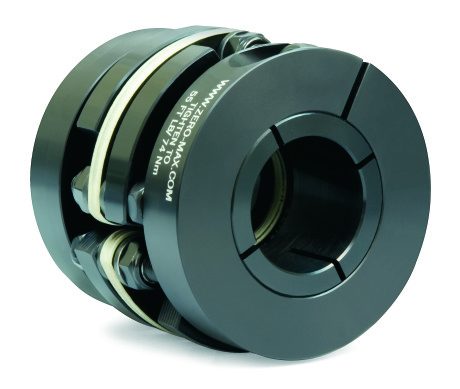
Disc couplings are a logical choice for servomotor and other demanding applications because of their ability to transmit high torque, operate at high/changing speeds, and to handle misalignment and system loads (fig.1). However, not all disc couplings are created equal. The one chosen will influence the system’s performance and lifespan. While a coupling’s torque, misalignment, and rpm capacities need to be evaluated against a system’s requirements, the coupling disc-pack usually is the most important aspect of the coupling’s design since it will affect all critical performance aspects of the coupling and the system in which it is used.
The most common type of disc-packs are made of metal and can be found in different shapes (straight-sided, scalloped edges, square, etc. (fig.2). In contrast, Zero Max has designed a high-performance coupling, called the CD® coupling, that features a uniquely shaped disc-pack that is constructed of a special composite material rather than metal. This composite material disc pack provides system designers a better alternative over metal disc couplings. The advantages include superior ability to absorb shock and vibration, better misalignment capacity, electrical isolation and elimination of fatigue and fretting, all common failures of metal disc couplings. Whereas metal disc couplings may be less expensive initially, overall cost of composite disc couplings will usually be lower because they are rated for longer life and require little or no maintenance.
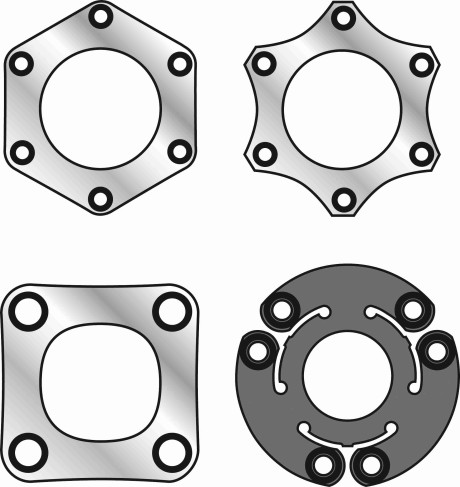
Coupling Provides Misalignment Correction
The ability to accommodate misalignment is a critical aspect of a flexible disc coupling (fig.3). Misalignment between coupled shafts occurs due to manufacturing tolerances, improper installation, or from loads in the system. While disc couplings excel at compensating for these misalignments, not all disc couplings handle misalignment equally well. Parallel, angular, and axial misalignment between coupled shafts should all be examined to see if the coupling selected is up to the task. It is important to know a coupling’s misalignment rating as well as the stiffness rating of the coupling. The stiffer a coupling, the higher the reaction load misalignment will transmit to the coupled components. These reaction loads will have a negative effect on the life of the system. To limit these reaction loads, Zero-Max composite disc couplings are designed less radially stiff than metal disc couplings. Therefore, they transmit lower reaction loads on the coupled equipment and thereby increase the life of these (often expensive) items.
The amount of misalignment that a system can experience will typically determine the selection between a single-flex (one flexible disc-pack) and a double-flex (two flexible disc-pack) coupling. While more compact in size than the double-flex variety, a single-flex coupling will have lower misalignment capacity and higher reaction loads.
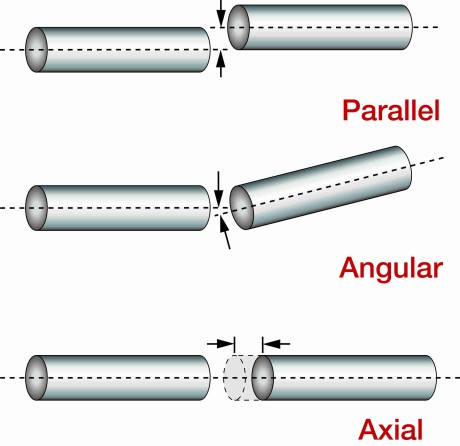
A common misconception is that single-flex disc couplings cannot accommodate parallel misalignment. Although this is true for metal disc couplings, the unique design of the disc-pack used in the Zero-Max CD coupling allows the single-flex CD coupling to accommodate limited parallel misalignment. This permits designers to implement a single-flex disc coupling into designs that may not have space for a double-flex coupling.
Intermittent motion in food pouching system smoothed with CD coupling
Servomotor powered indexing stations in automated pouching systems require accurate registration as they position, fill and heat seal completed pouches. For Robert’s Packaging, its systems fill and seal stand-up pouches from roll stock at up to 220 pouches a minute with food products such as potato chips, rice, candy, nuts and pet food.
Keeping motion under control in these systems is a key machine design challenge because of the high speed and intermittent motion of the polypropylene film. Designed with a series of automated pouch forming and pouch filling stations, the intermittent motion is especially critical at the sealing station. The system’s servo motor draws the preprinted film forward through a series of rubber covered rollers, stopping to heat seal a completed pouch, restarting instantly to repeat the cycle. An indexing cycle occurs every .3333 seconds, with approximately half of that required for film advance and remaining .1666 second used in the sealing operation.
Robert’s Packaging system design reflects top-notch engineering to achieve this highly efficient, cycling through use of an integrated servomotor/coupling combination. The off-the-shelf modules include a Zero-Max Model 6A37C single flex CD coupling with clamp style hubs with connects directly to a 2 kW Yaskawa 3000 rpm vertically mounted servomotor (4 kW for the horizontal stations). The motor/coupling combination provides rapid start/stop film advance while preventing misalignment problems before they occur. The motor draws the film smoothly, in-register while the CD coupling dampens any backlash forces, thereby eliminating any chance of a miss feed of the system’s polypropylene film. With two such stations in a typical pouching system, this is a tall order indeed. (figg. 4, 5).
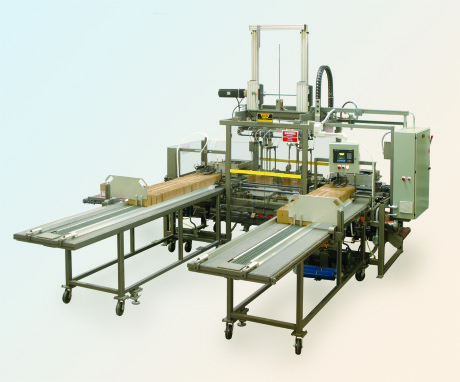
Ideal for the Robert’s Packaging pouching application, the CD coupling has many of the best features of other coupling designs with an important exception – its patented composite disc pack design. While the CD coupling transmits torque similar to any conventional disc coupling, it does a better job of dampening backlash and shock without the coupling fatiguing which can occur in a fast-moving system like that at Robert’s packaging. It accomplishes this through a patented unique open arm disc design made of highly durable composite disc material. This design absorbs and cushions any tendency for backlash from the servomotor’s intermittent motion.
According to Robert’s engineers the pouch forming accuracy is monitored each indexing cycle by an Allen Bradley optical reader which hits a tiny target spot on the pouch face without fail every time.
Another benefit Robert’s Packaging found using the CD coupling was that it allowed for the use of a single flex, single disc model, which is less costly and does the work of most other double metal disc designs. It does so using less space with greater misalignment capability.
Summary
As shown above, the coupling used in a specific application has a major impact on the ultimate performance and life of that system. A properly selected coupling, on the other hand, not only assures top performance in a demanding application, it also will provide protection to the integral equipment it is connecting. A closer look at the disc-pack used in a flexible disc coupling is a good way to guarantee those benefits.

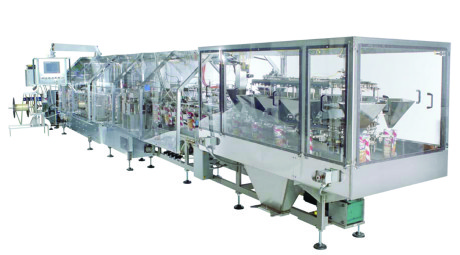


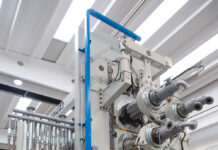
Hello,
Could you please send me details about the dimensions of your flexible disc for the coupling. Hole circle etc. i would like to order few.
Please let me know as soon as possible.
Regards Oliver
Dear Mr. Koerfgen,
for any request about Zero-Max couplings, you can directly contact Zero-Max to following address:
sales@zero-max.com
Kind regards
Anna Bonanomi
editor